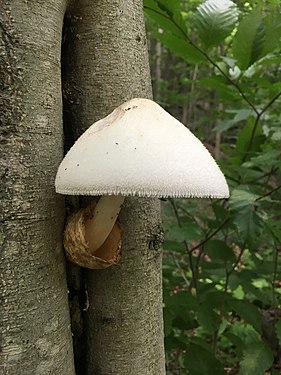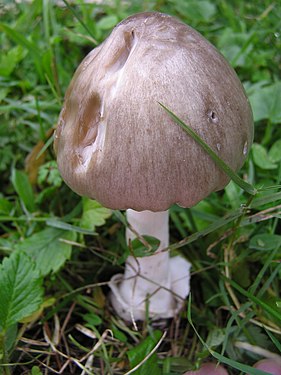In mycology, a volva is a cup-like structure at the base of a mushroom that is a remnant of the universal veil,[1] or the remains of the peridium that encloses the immature fruit bodies of gasteroid fungi.[2] This macrofeature is important in wild mushroom identification because it is an easily observed, taxonomically significant feature that frequently signifies a member of Amanitaceae. This has particular importance due to the disproportionately high number of deadly poisonous species contained within that family.


A mushroom's volva is often partially or completely buried in the ground, and therefore care must be taken to check for its presence when identifying mushrooms.[3] Cutting or pulling mushrooms and attempting to identify them later without having noted this feature could be a fatal error.
Whilst a volva is a feature best known from Amanita species and stinkhorns such as the Phallaceae family and others in the Phallales order, it may also occur with other genera including:
Some other species such as Leucoagaricus volvatus, Leucoagaricus bivelatus also display a volva despite this not being a typical trait for these genera.[4]
The majority of the almost 300 species described In the Conocybe genus do not have a volva but there are a small number of species in Conocybe section Singerella which possess a small volva, though in some it may not be immediately evident as they can remain buried in dung. Conocybe species with a volva include: C. anthuriae,[5] C. corneri,[6] C hornana,[5] C. locellina,[5] C. vaginata,[7] C. volvata,[8] C. volviornata,[9] C. volviradicata.[10]
- Volvariella surrecta growing parasitically


